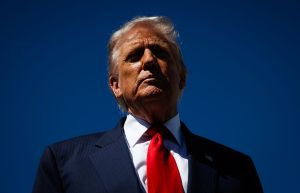It was recently suggested that the coronavirus was turbocharged by a mutation which made it more virulent than ever. However scienists debunk this story saying that it is not TRUE.
The source of the allegation was a preprint study that was published online. It was neither peer viewed or published in a journal so the basis of the scientific claim is not valid.
A report was filed by a team led by Bette Korber, a biologist at Los Alamos National Laboratory in New Mexico. They discovered a mutation that was traced to the coronavirus that struck Europe way back in February, which spread fast soon after. It then became the dominate strain to circulate in Europe then and new countries.
Referring to the super-mutation, they cited that will be more virulent than ever. With the media covering the "turbo-charged virus," it was not a good development that it will be sickening more people at an alarming rate. Knowing that the contagion may be equal to that of a tsunami, it does not make it easy for the world.
Despite all the alarming overtones of the impending strain, most virus experts did not appear so flustered by it. According to them, a new strain did not exist, and "the coronavirus so far has not split into clearly distinct forms."
All viruses mutate as they are exposed to hosts and environments that is the normal evolution it goes through. They added that just because a mutation becomes more common, it isn't a proof that it is altering how the virus functions. Viral mutation does not equal more virulence as claimed by the authors of the said study.
Korber did not comment on the criticism of the study.
By nature, mutations are small alterations in the genetic material as the proteins are replicated. Compared to other cells, the human cell is not easy to fool and mutations are deemed necessary. But the human chromosome is unique to everyone.
Call viruses a sloppy joe that make more mutants than needed when hijacking a cell. So, these inferior copies are short-lived and destroyed by their very viral mechanisms. Viruses will keep the ones that are best suited, but others will become inert.
Even viruses are subject to natural selection and will allow beneficial mutants to survive and spread. Though some neutral mutants can exist more by chance with a process called genetic drift.
According to Sergei Pond, an evolutionary biologist at Temple University. He said,"I don't think they provide evidence to claim transmissibility enhancement." But he added that there should be two strains struggling for dominance in the same locality to force one of the strains to be more dominant.
Sergei said the propagation of the coronavirus shows that mutations are also transmitted. One of these is the D614G that was traced to rise several times as the virus jumped from host to host on its own.
Strains of viruses that had D614G type was not successful in populations. But the virus became the default form it had earlier, which points out a selective adaption for viruses.
It was met with doubt when some posted tweets to make a critique. Bill Hanage an epidemiologist at the Harvard T.H. Chan School of Public Health commented the results were doubtful at best.
Bill Wasik, an evolutionary biologist at Cornell University, said that "they deserve a strong and good-faith peer review."
© 2026 HNGN, All rights reserved. Do not reproduce without permission.








